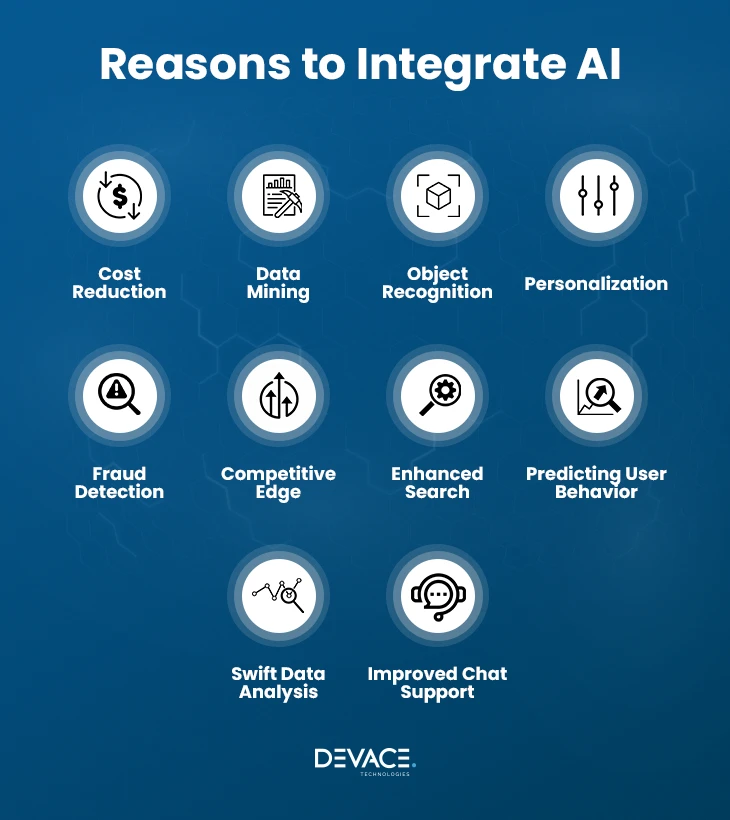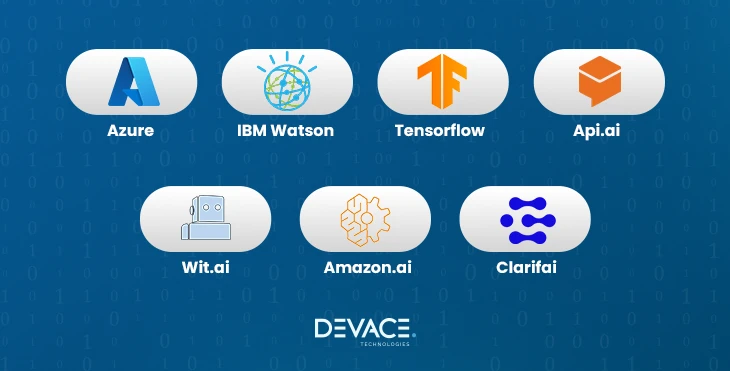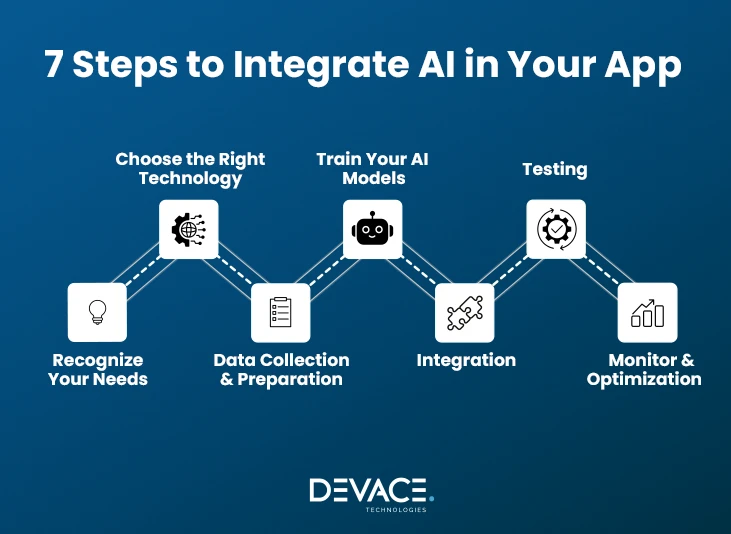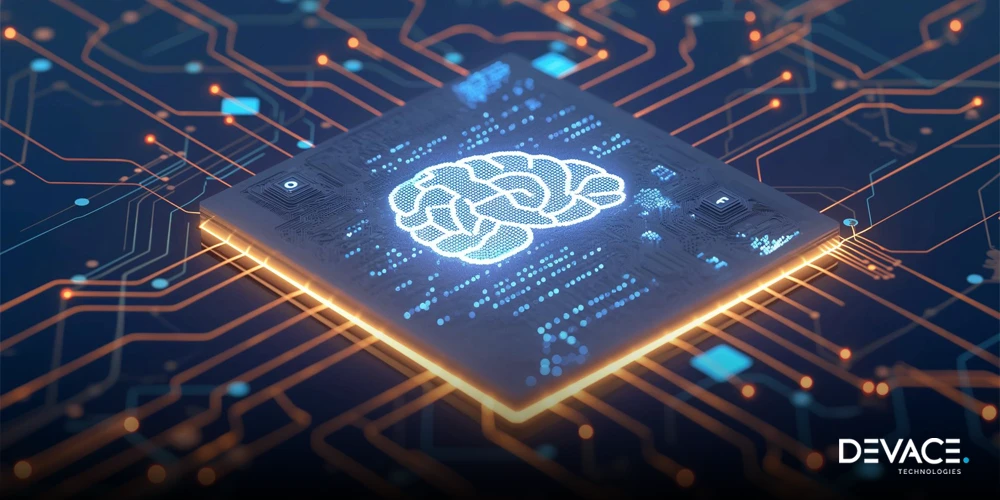Businesses now have to offer profound personalized experiences that feel less programmed. Here, AI integration in any mobile or web app can play a significant role by offering a customized user experience. As well as enabling products to comprehend, reason, and adapt like never before.
If you are looking to elevate your business, then missing out on AI can prove to be a huge setback. Costing you resources, time, and money so let us tell you how you can integrate AI in your business in just seven steps.
So, let’s begin with a brief introduction to AI integration.
What is AI integration?
AI integration is the incorporation of artificial intelligence technologies into already present business operations. The aim of this integration is:
- Automation of tasks
- Enhance decision-making
- Improve overall efficiency
Example
A retail company can integrate AI-fueled chatbots in their customer service operations for instant support.
Some of the other reasons why AI business integration is useful.
Why is AI Integration Useful for Your App?
The integration of AI in your solution can make it more secure, seamless, and flawless. Here are other reasons why AI can be useful.

If you are thinking of integrating AI, then with the help of our experts we are outlining the cost for you.
Cost of AI Integration
The cost of integrating AI in your solution can be $30,000 to $300,000 but this price can vary depending upon project complexity. However, you can hire AI developers on an hourly basis for $40-$250.
So, the safest solution over here is the development of a solution without AI integration, and then after an initial assessment of customer behavior AI integration can be done. You can find app developers for $20-$50 per hour offering end-to-end development.
In this way, you will have existing structure plus customer data to train your AI models before their integration in your solution.
Looking for a web app development company? Hire Devace technologies to build flawless web apps.
Platforms for AI Integration
Several platforms can help you integrate AI into your solution. Some of the famous ones are given below:

How to Integrate AI into an App?
You can either hire an AI team to integrate AI or do it on your own if you have a technical background. In both ways you need to know the seven essential steps below to help you:
- Recognize your needs.
- Choose the right technology.
- Data collection & preparation.
- Train AI models.
- Integration.
- Testing.
- Optimization.
So, let us tell you how to integrate AI into your business effectively & efficiently in detail.
Steps to Integrate AI in Your App
AI integrations have become common and in just seven simple steps you can also include AI in your solution.

1. Recognize your needs
The first step is to define your business problem or problems that AI can solve. This recognition is going to determine your choice for the right AI solution.
For instance, you want an efficient customer support chatbot that can promptly respond and make personalized recommendations to shoppers based on customer data. Then AI-based chatbots are best and you can get them developed for your project at a low cost.
Another important thing here is to identify whether you want to develop your own AI model or modify your existing one.
2. Choose the right technology
Artificial intelligence is a broader term including data mining, machine learning, and deep learning. So, after the recognition of the problem, pick the approach to solve it with the help of the right AI technology. Let us tell you about different technologies and their application:
- Machine Learning (ML) is used in real-time data analysis to assess user behavior, and preferences and forecast market trends.
- Natural Language Processing (NLP) can be best in organizing unstructured data like emails or tweets. Also, for pulling specific details from texts and generating human-like text.
Uses of Machine Learning
Some of the uses of machine learning are given below:
- Image recognition is best for identifying & differentiating objects within images. Such as face recognition for security purposes.
- Voice recognition is to recognize and identify spoken words and is used in applications like virtual assistants and voice-activated controls etc.
Generative AI has various applications in various industries. It can be used to enhance the quality of images and early detection of disease. Whereas, in Fintech this technology can be used for fraud detection based on transaction patterns and personalization of financial advice, etc.
But to leverage its full advantage you need a team that understands your business requirements & implements AI at low cost.
3. Data Collection & Preparation
The next step in AI integration is the collection of data and its preparation. It is one of the most important steps. Even if you are planning to improve your existing AI model.
For this, you also need to ensure the relevancy and quality of data because poor-quality data can lead to biased models providing inaccurate predictions.
Data collection is a difficult task, the tools and methods vary depending on the industry. However, different analytics tools that support personalization are given below:
- Mixpanel
- Hotjar
- Google Analytics
Yet, you might need a team that collects data, properly categorizes, and derives insights that are useful for your business. Otherwise, the structured or unstructured data you have is just raw information with no use. Also, before the training of AI models, you need to prepare your data. Below are tools that offer advanced techniques for data preparation tasks:
- Google Cloud AI
- Amazon Machine Learning
- Azure Machine Learning
4. Train your AI models
You can fine-tune your AI models using datasets, but this can be a resource-intensive step depending on the data quality and complexity of the task.
However, training your models can be useful in refining their performance, and increasing your adaptation towards new trends. And effective in predicting customer behavior increasing personalization driving growth. But you can come across some challenges regarding training your AI models such as:
- Data management.
- Finding relevant data tools.
- Insufficient data sets.
However, you can hire developers who can develop seamless web apps with flawless architecture, helping you in smooth AI implementation afterward.
Build a scalable app with smooth web architecture & enhanced integration capabilities.
5. Integration
This is the most crucial step as the well-trained models become a functional part of your software. Here, you need to ensure that the AI functionalities interact with the app’s already present features.
However, this process mainly includes the API setup for your app to communicate with your model. Simply, APIs allow software parts to exchange data correctly.
If you are outsourcing software development, then make sure to ask your partner for the smooth integration of API so your app can function seamlessly.
6. Testing
Do testing to ensure that your AI-fueled app is working fine and that the integration AI has not disturbed the app’s overall functioning. Here’s what you can do:
Perform unit tests to check individual components.
Execute user acceptance tests to see if the app meets end-user needs.
You need to make sure that the functionalities related to AI work accurately. Such as dealing with unexpected inputs. Plus, the overall web application architecture is operating smoothly.
7. Monitoring & Optimization
After effective AI integration monitor your app for processing speed, prediction accuracy, user engagement, and functionality checking. Also, continuous optimization is necessary. Such as retraining the model with data or redesigning different aspects of the model.
You just need to remember that the integration of AI is an iterative process, and you need constant testing, enhancement & feedback.
Kill bugs & optimize your app performance via top-quality assurance services.
Today, big companies have AI integrated into their systems to provide personalized user experience.
Examples of AI Integration
Let’s see some of the examples of AI integration that have helped companies refine their processes by streamlining their operations.
Yelp
Yelp uses Google-manufactured BERT for various NLP tasks such as classification and sentiment analysis.
Netflix
Via ML algorithms Netflix monitors, the network conditions and adjusts video quality in real time to offer a seamless viewing experience minimizing buffering.
Spotify
Machine learning lies at the core of Spotify’s business as it offers relevant content recommendations to users & generates playlists.
However, the integration of AI from small startups into big enterprises can contain some common challenges. Let’s see some of them!
Top Challenges in AI Integrations & Their Solution
Some of the main challenges you can face whilst integrating AI into your solution and their fixes are given below.
| Challenges | The Fix |
|---|---|
| No strategic vision in terms of infusing AI | Conduct a detailed analysis to identify areas for AI deployment to ensure improvement. Engage cross-functional team to develop a detailed AI roadmap, timelines & KPIs. |
| Inaccurate & inaccessible data, severely undermining AI models | Invest in data management technologies to ensure clean & readily available data. Insufficient AI skills and expertise. |
| Insufficient AI skills and expertise | You can hire AI experts, but this can be expensive so go for an AI development company. |
| AI systems often process sensitive data, raising concerns about misuse | Develop AI systems, keeping privacy in mind (utilize techniques like encryption). |
Wrapping Up
We don’t know what the future will hold but AI is going to rule the world. With its widespread use, it will make business processes more streamlined and efficient.
That’s why businesses are moving towards AI integration in their solution. But before you include AI, our advice is to get your app developed and then add AI-powered features & functionalities as per the needs.
How Can Devace Technologies Help You?
At Devace Technologies, we ensure you get a seamless web app developed within your budget. Our experts build robust web architecture that can integrate AI or any other functionality you need. Whether you need an MVP or a fully developed solution we have got you covered!
Feel free to book your first free consultation here
Frequently Asked Questions
What is the cost of integrating AI into your app?
The cost of integrating AI in your app can be $30,000 to $300,000 but you can hire AI developers on an hourly basis for $40-$250. But this cost can increase further depending upon the complexity of features. So, the smart idea here is to first develop an app to assess your needs and then integrate AI.
What are the key challenges in AI integration?
The insufficient data to train AI models and the lack of expertise is one of the biggest challenges. You can solve these challenges by including relevant and sufficient data as well as hiring expert AI developers to help you.
What are the most important roles in AI projects?
In AI projects the key role is of the data scientist who interprets complex datasets to build & extract actionable insights. The machine learning engineer who focuses on optimizing and building models and an AI researcher who conducts research and suggests the best AI methodologies.


